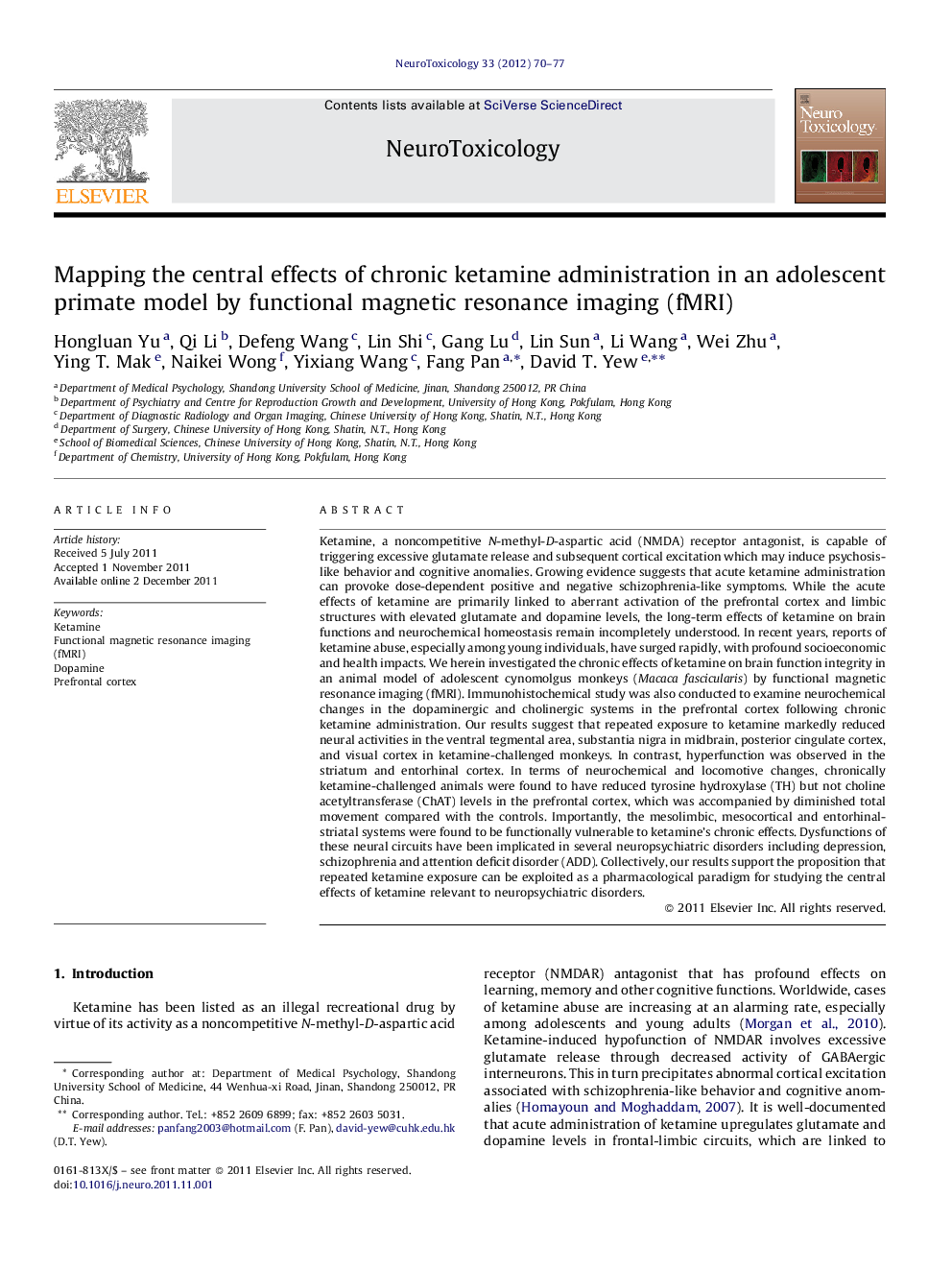| کد مقاله | کد نشریه | سال انتشار | مقاله انگلیسی | نسخه تمام متن |
|---|---|---|---|---|
| 2589785 | 1131706 | 2012 | 8 صفحه PDF | دانلود رایگان |

Ketamine, a noncompetitive N-methyl-D-aspartic acid (NMDA) receptor antagonist, is capable of triggering excessive glutamate release and subsequent cortical excitation which may induce psychosis-like behavior and cognitive anomalies. Growing evidence suggests that acute ketamine administration can provoke dose-dependent positive and negative schizophrenia-like symptoms. While the acute effects of ketamine are primarily linked to aberrant activation of the prefrontal cortex and limbic structures with elevated glutamate and dopamine levels, the long-term effects of ketamine on brain functions and neurochemical homeostasis remain incompletely understood. In recent years, reports of ketamine abuse, especially among young individuals, have surged rapidly, with profound socioeconomic and health impacts. We herein investigated the chronic effects of ketamine on brain function integrity in an animal model of adolescent cynomolgus monkeys (Macaca fascicularis) by functional magnetic resonance imaging (fMRI). Immunohistochemical study was also conducted to examine neurochemical changes in the dopaminergic and cholinergic systems in the prefrontal cortex following chronic ketamine administration. Our results suggest that repeated exposure to ketamine markedly reduced neural activities in the ventral tegmental area, substantia nigra in midbrain, posterior cingulate cortex, and visual cortex in ketamine-challenged monkeys. In contrast, hyperfunction was observed in the striatum and entorhinal cortex. In terms of neurochemical and locomotive changes, chronically ketamine-challenged animals were found to have reduced tyrosine hydroxylase (TH) but not choline acetyltransferase (ChAT) levels in the prefrontal cortex, which was accompanied by diminished total movement compared with the controls. Importantly, the mesolimbic, mesocortical and entorhinal-striatal systems were found to be functionally vulnerable to ketamine's chronic effects. Dysfunctions of these neural circuits have been implicated in several neuropsychiatric disorders including depression, schizophrenia and attention deficit disorder (ADD). Collectively, our results support the proposition that repeated ketamine exposure can be exploited as a pharmacological paradigm for studying the central effects of ketamine relevant to neuropsychiatric disorders.
► Chronic effects of ketamine on primate brain were examined by fMRI.
► Mesolimbic, mesocortical and ent-striatal systems were functionally affected.
► Hypolocomotor activity was observed in ketamine-challenged animals.
► Tyrosine hydroxylase levels were reduced in prefrontal cortex.
► Repeated ketamine exposure may be used as a paradigm for neuropsychiatric disorders.
Journal: NeuroToxicology - Volume 33, Issue 1, January 2012, Pages 70–77